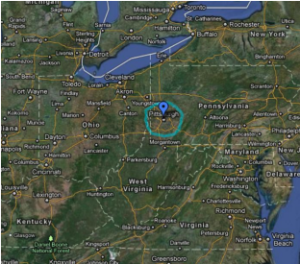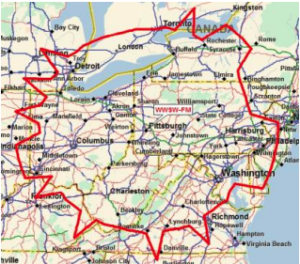The Public Inspection File Part 3 – Citizen Agreements, Contours, Ownership
[April 2012] In this, our third in the series, we continue with our look at the Public Inspection File and how it can be kept in compliance with the FCC Rules.
The FCC Rules and Regulations, particularly Sections 73.3526 and 73.3527 describe what stations will provide to any citizen who comes to the Main Studio and requests access to the Public Inspection File.
This time we want to consider the contents of three folders that should be in your Public Inspection File: Citizen Agreements, Contour Maps, and Ownership Reports. In these folders, it is not uncommon for little to change from year to year. In fact, many stations essentially need to blow the dust off at least two of these any time someone asks to see them.
Citizen Agreements
According to Section 73.3526(e)(3) of the FCC Rules (Item 17 if you are using the Self-Inspection Checklists), these would be agreements made by a station with various citizen groups to spell out a special arrangement regarding practices or goals that affect station operations.
For example, a station might make an agreement with a civic group for Public Service Announcements or a weekly program, or perhaps to use a certain group to find new employees.
Such agreements are described in the Rules as “for primarily noncommercial purposes.” (Commercial matters, such as advertising contracts, union, employment, and personal services contracts, programming contracts, etc. are not part of this section of the Public Inspection File.)
However, most station managers tend to treat these agreements as dangerous, avoiding such written deals as much as possible. The reason: if you make a special arrangement for one group – perhaps for PSAs or a weekly hour for them to program – as soon as the other groups discover it, you will be besieged by requests from every community and non-profit group in the area, all seeking equal “free time” and/or opportunities to place their clients in your job openings.
Thus most stations would place a note, on station letterhead, in the folder with the message: “This file folder is not applicable to this station at this time.”
Contour Maps
The FCC Rules (73.3526(e)(4) or 73.3527(e)(4) specify that you must have a copy of any service contour maps submitted to the FCC. This folder would not see any changes unless the station makes changes to the transmission plant. At that point the current, accurate information should be filed. (By the way, that word “accurate” comes from the FCC rule about contour maps and should not be ignored.)
These maps should show your transmitter location and service area. The primary interest is the station’s “City Grade” signal – defined for AM stations as the 5 mV/m (millivolts per meter) 2 contour, and for FM stations the 3.16 mV/m (alternatively 780 dBu) contour, but you may show additional contours. If you have multiple power and/or pattern authorizations, they should all be represented in this folder.
It is easy to get a contour map. If you have the last FCC 301 or 302 Application in the station files, these maps will be in the engineering section. FM and TV stations can go to the FCC.gov site – contour maps are plotted for you.

The station’s engineering or legal consultants may have a copy they will produce for you. Or use one of the software packages or Internet sites that display a station’s contour, based on FCC data.
What you should not do is use a map created by the programming or sales department where someone took a Sharpie or crayon and drew a large quasi-circle encompassing towns and cities they think – or wish – the station covers. Discovery of such a map in the Public Inspection File will be certain to cause problems. Better it is to help staff understand what the contours mean.
Even if software designed to produce coverage maps is used, care must be taken to avoid depicting your primary coverage as including a half a dozen states and secondary coverage that includes other continents. Yes, computers can do that, if you use unreasonable parameters.
As an extreme example, Bill Weeks once produced a map showing how a hypothetical 1 dBu contour could allow a station to claim coverage from Detroit to Washington, DC and from Canada to North Carolina.

This looks rather silly to a broadcaster, but it might impress a small business person.
Nevertheless, putting a map like this in the Public Inspection File would not generate a chuckle from most inspectors – but instead just net you a nice fine.
Ownership Reports
The FCC wants a visitor to be able to see who actually owns the station (73.3526(e)(5). The FCC Self-inspection Checklist, items 20 through 23 will walk you through most of the materials that are expected to be in this folder.
Thus this folder needs to have the current FCC Ownership Report Form (323) in it, and the Articles of Incorporation, Bylaws, any updated, supplemental ownership reports. Exhibits, letters and other documents associated with this file that are filed with the FCC also should be there. Most stations legal counsel will usually 3 prompt you to keep this file up-to-date whenever something changes or needs to be added.
Unless you are in the process of selling the station – or just bought it – this file normally will not change, except to have the latest ownership report every two years (Be sure to take the old report out – but leave the Articles of Incorporation and Bylaws if they have not changed).
Next time we plan to offer some observations on the Political File – a veritable land mine during hot political seasons like the one we are about to enter.
– – –
Have you any comments or questions? Perhaps there are some areas you would like us to explain a bit further? Feel free to let us know.
